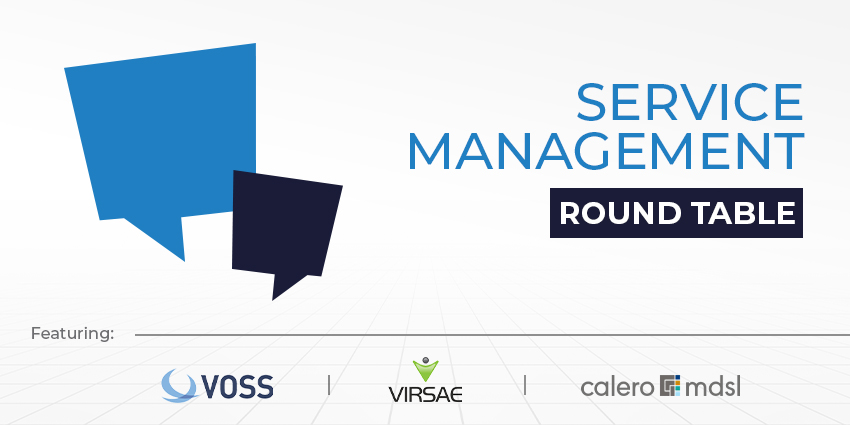The massive shift from office working to working remotely has been one of the monumental changes brought on by the pandemic. And it is not going anywhere, as hybrid working is set to become the default way of working for many organisations.
However, this mass pivot to remote working put an incredible strain on organisations who had to stretch IT budgets to cover equipment and software to enable their employees to work effectively. Many organisations pushed through with new tech and solutions because time was of the essence and have deployed service management software to keep track of their distributed workforce.
According to research from analyst firm Metrigy, 73 per cent of companies are using more monitoring and management tools and gaining more visibility into their applications since moving to a work-from-home environment.
“The issue many IT leaders face is that they may need multiple tools to accomplish their goals, particularly in a multi-vendor, multi-architecture, multi-application environment,” Metrigy stated in its New Workplaces Drive Transformation report.
“Most companies (61.5 per cent) prefer their management/monitoring tools come from a third party, and 64.4 per cent says it’s extremely valuable to have a single tool that can manage multiple vendors.”
We gathered executives from Calero-MDSL, Virsae, and VOSS to discuss the role service management platforms have played in the pandemic and what the future holds for the technology in a hybrid world
What challenges have businesses faced throughout the pandemic and how have service management platforms helped them be solved?

Ian McCarthy, Director UK & EMEA, Virsae:
“The remote workforce changed everything. Now, users make calls via enterprise and UCaaS platforms, using a range of connectivity, speeds, and ISPs, typically on consumer-grade connections”
“Moreover, remote workers are sharing their network with family members, who are consuming precious bandwidth, perhaps even generating background noise rarely encountered in the workplace.
“In the early stages of COVID, organisations lacked the time to correctly scope a project-style migration to new platforms. However, they still had to ensure new platforms consistently delivered high-quality user and customer experiences.
“In support of their customers, MSPs had to build supporting services, and the remote deployment nature of cloud-based service management was a key enabler.”
Shaun Wormald, VP, VOSS Solutions:
“Businesses have seen that amid the chaos and uncertainty, efficient digital business communications, remote teams’ enablement, and collaboration have created an environment that more than ever encourages innovation, new ways of working and wards off disruption.
“Aggressive and constant innovation – underpinned by a proven service management platform that includes service desk, collaboration automation, orchestration, and assurance – has been the secret sauce to surviving disruption and thriving in the post pandemic era.
“With many staff likely to stay remote or hybrid, the lack of a strong service management platform as defined above will hamper any business transformation projects, not deliver the user experiences required, and thwart business success”
Matt Maloney, VP Long term Planning and Strategy, Calero-MDSL:
“The pandemic spend hangover is real and needs to be addressed. While many companies have reopened offices, the reality is hybrid digital workers are here to stay and there is an ongoing need to address these key challenges.
“New solutions are emerging to address out of control spend due to the sudden spike in work from home and the need to invest in UCC or UCaasUCaaS solutions required to support them. When COVID-19 struck, enterprises didn’t have time to go through extensive evaluations and had to make snap decisions without process and plans on how to manage and control.”
How has service management software had to evolve over the last 18 months?

Shaun Wormald, VP, VOSS Solutions:
“To optimise their UC platforms and to efficiently implement a digital workplace, companies need a highly automated service management and assurance framework that focuses on the agile delivery of positive key business outcomes that improve employee and customer experience in the new digital workplace.
“Work is now an activity not a place that the digital workspace supports, so having the tools, systems, and process to manage this highly distributed and complex environment is critical for businesses.
“A service management platform should allow companies to take advantage of best-in-class technology to achieve their business objectives, and pivot from one UC vendor to another easily (or have multiple) as the business demands due to change that is occurring increasingly more rapidly.”
Matt Maloney, VP Long term Planning and Strategy, Calero-MDSL:
“Many platform providers are embracing vendor ecosystems (digital marketplaces). These digital marketplaces are API based and establish standards in how digital platforms and services work together. This unlocks frictionless service to service integration, supercharging their value as the sum of their parts versus siloed tools, for example, track Zoom customer support calls in ServiceNow, and sales meetings in Salesforce automatically.
“Platform-to-platform integrations have quickly gained ground as a secure, fast and frictionless way of helping enterprises drive more value and automation around their new digital services. However, they also increase the potential for waste due to the number of available integrations, subscription types and support required for each service. This means visibility and management needs to include integrations, not just the services themselves.”
Ian McCarthy, Director UK & EMEA, Virsae:
“New technologies have introduced new thinking and processes to help employees do their jobs better, fostering innovation and a happier more engaged workforce. But this more enlightened approach to modern work requires a consistently great user and customer experience.
“Managing the shift requires end-to-end visibility and data-led diagnostics combining legacy and new data points, visible in one secure, single pane of glass.
One of the biggest implications for service management, particularly in the hybrid work world, is the architecture around data collection.
What role will service management play in hybrid working models?
Shaun Wormald, VP, VOSS Solutions:
“Hybrid working models introduce additional complexity which, by definition, increases the importance of a service management platform to provide tools to manage this more complex technical architecture that now stretches further than the IT team’s immediate control (home working environment, user end point technologies as well as public and private networks). The ability to gather or synchronize data from multiple domains and stitch together an end-to-end service view for the user experience is no longer a ‘nice to have – it’s mission critical.
“Service management, automation, orchestration, and assurance tools together give companies the confidence to deploy and support these new working models with no impact to business performance.
“In my opinion, underpinned by service management, businesses will continue to operate, innovate, and deliver customer success even from remote or hybrid work settings, and any expectation that the world will go back to the way things where before is a pipedream.”
Ian McCarthy, Director UK & EMEA, Virsae:
“Vendors are evolving to visually represent user activity to better understand who is using which features – along with endpoint behaviour – to provide a detailed picture of users and their communications habits. For example, are high levels of background noise causing the user to regularly mute or adjust volume levels? Are users frequently turning cameras or screen-sharing off due to limited bandwidth?”

Matt Maloney, VP Long term Planning and Strategy, Calero-MDSL:
“Enterprises need a unified solution that connects the dots across all of their hybrid services. It’s difficult to manage multiple solutions in a consistent way to optimise expenses and provide consistent governance while delivering a good experience to the end users. Complete lifecycle management from discovery, expense management, and governance across all digital services in a single platform is a critical need.
“Most enterprises are on their digital transformation journey and some still have a significant amount of on-prem technology investments. These should also be supported as part of a hybrid management solution”
“Ultimately, with a unified solution the value is around: Reducing IT overhead, simplifying operations, reducing risk, and moving faster.”







